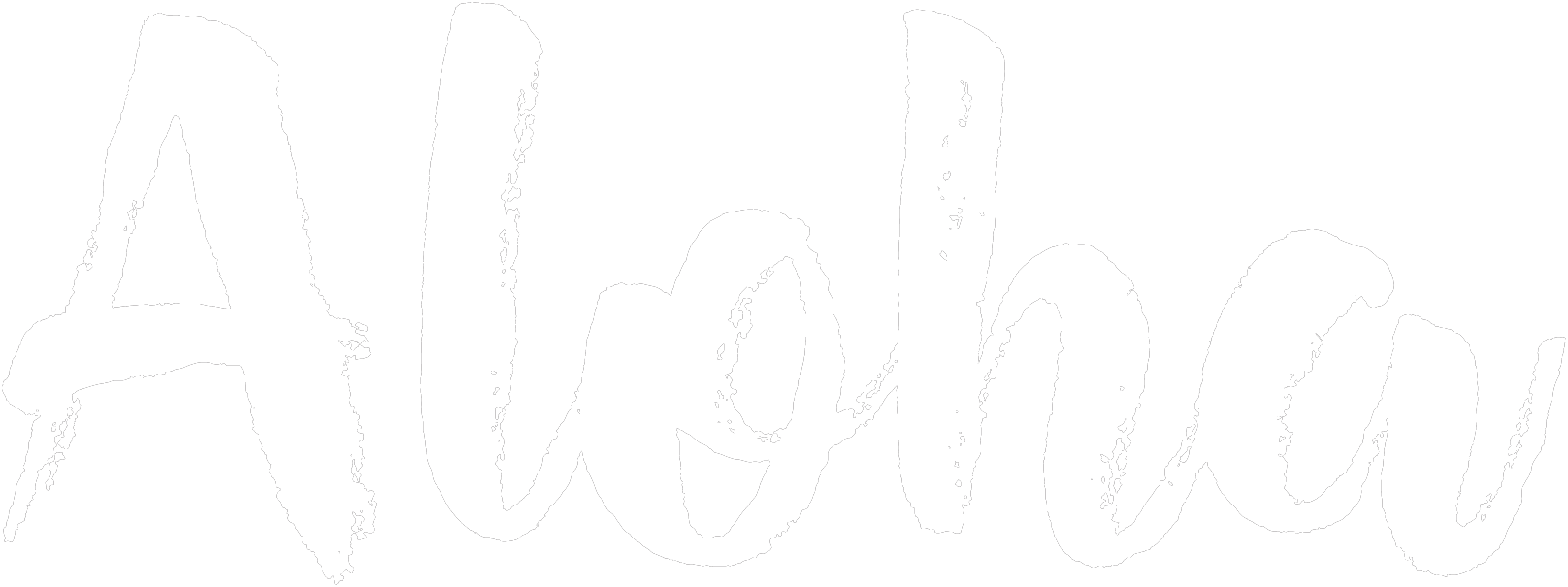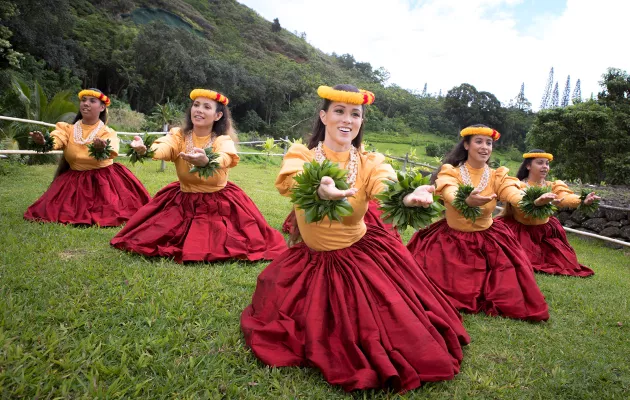

 Hula
Hula
Hula on the Island of Hawaiʻi
Der Hula ist ein unverwechselbarer hawaiianischer Tanz, der von Gesang oder einem Sprechchor und Perkussionsinstrumenten wie pahu oder ipu (unterschiedlichste Trommeln) begleitet wird und die Geschichten, Traditionen und Kultur von Hawaii bewahrt.Hawaii Island ist stolz darauf, Austragungsort des bekanntesten Hula-Wettbewerbs, des Merrie Monarch Hula Festivals, zu sein. Das alljährlich in Downtown Hilo (im März/April, in der Woche nach Ostersonntag) stattfindende Merrie Monarch Hula Festival wurde nach dem König David Kalakaua benannt, der den Hula Ende des 19. Jahrhunderts wiederbelebte, nachdem dieser jahrzehntelang von christlichen Missionaren verboten wurde. Ein Zitat von König Kalakaua ist bis heute das Motto des Merrie Monarch Hula Festival: „Hula ist die Sprache des Herzens und deshalb der Herzschlag des hawaiianischen Volkes.“
Es ist nicht ganz einfach, Karten für das Merrie Monarch Hula Festival zu bekommen, doch die frei zugänglichen kostenlosen Veranstaltungen rund um das Festival sind ebenfalls ein faszinierendes Erlebnis. Das ganze Jahr über finden außerdem auch viele andere Hula-Wettbewerbe und -Ausstellungen statt. Zu diesen Veranstaltungen gehören unter anderem: Die Hula Arts at Kilauea Series (Hawaii Volcanoes National Park), Iolani Luahine Hula Festival and Hula Scholarship Competition (Februar, Kailua-Kona), Queen Liliuokalani Festival (September, Hilo) und Moku o Keawe International Festival (November, Kohala Coast). An historischen Stätten wie dem Hulihee Palace und in den Hotels und Resorts auf Hawaii Island finden oftmals auch Livevorführungen statt.
Im Rahmen eines Luau-Fests können Sie ebenfalls Hula-Tänze bewundern und mehr über die hawaiianische und polynesische Kultur erfahren. Es gibt halau hula (Hula-Schule), in denen kumu hula (Hula-Lehrer) Sie in die hohe Kunst des Hula-Tanzes einweihen. In ausgewählten Hotels und Resorts auf Hawaii Island wird manchmal kostenloser Unterricht angeboten.
“Aohe pau ka ʻike i ka hālau hoʻokahi. No one school contains the totality of all knowledge. A proverb that encourages respect of differing traditions, in hula and otherwise.”
Hula has many roots, with various traditions offering different origins of the art – reflecting the beauty of the Hawaiian respect for multiple perspectives in a way that does not need to be mutually exclusive. One tradition relays the story of the first sharing of hula at Hāʻena, a beach near Keaʻau in Puna. It was there that Hōpoe taught hula to Hiʻiaka, the favorite sister of the volcanic goddess Pele.
Two overarching styles of hula are hula kahiko (traditional hula) and hula ʻauana (modern hula). To simply categorize the two as old and new, however, minimizes the differences between the two and overlooks important distinctions.
Hula kahiko is traditionally performed as part of or as an extension of a ceremony, set to an oli (chant) and accompanied by percussion instruments. While many of the oli we hear along with hula kahiko are compositions from generations ago, there are also new oli and accompanying hula composed today. To call hula “ancient” improperly implies that the art is static. Rather, hula kahiko has strong roots in the past and continues to grow in modern Hawaiʻi.
Hula ʻauana is less formal hula, performed without ceremony. Around the turn of the 20th century, more new hula began to emerge in this less formal style. A story is told with the accompaniment of song and stringed instruments such as guitar, bass, steel guitar and ʻukulele.
Hula dancers train for years with the physical intensity of professional athletes and the academic rigor of doctoral students under the tutelage of a kumu hula before performing in public, so it is important to enjoy a performance respectfully.
If you happen upon a hula performance as part of a ceremony, note that it may not be intended as a public performance. You may be asked to keep a respectful distance, be silent, refrain from taking photos or video, or follow some other request to maintain the sanctity of the ceremony. Even if you are not asked to do so, it is appropriate to maintain a respectful distance.
Where Can I See Hula on the Island of Hawaiʻi?
Considered by many to be the pinnacle of the hula world, the Merrie Monarch Festival happens in Hilo on the island of Hawaiʻi the week following Easter every year. Tickets for the hula competition are hard to come by, but many performances can be found around Hilo town along with artisan fairs, fashion, music and more.
Other events with hula front and center include: The Hula Arts at Kīlauea Series, (Hawaiʻi Volcanoes National Park) ʻIolani Luahine Hula Festival and Hula Scholarship Competition (January/February, Kailua-Kona), Queen Liliʻuokalani Festival (September, Hilo), and the Moku o Keawe International Festival (November, Kohala Coast).
You can also see live performances at historic sites like Huliheʻe Palace and the Island of Hawaiʻi’s hotels and resorts. While serious study of hula is undertaken in a hālau hula under the tutelage of a kumu hula, more casual lessons are often offered at select island of Hawaiʻi hotels and resorts. A lūʻau is another fun and festive place to watch hula and learn about Hawaiian and Polynesian culture.
Erfahren Sie mehr über Hawaii Hula

Erfahren Sie mehr über die Tradition des Hula-Tanzes auf den hawaiianischen Inseln im Abschnitt „Kultur“ der Website.
Hula
Bitte beachten Sie: Wir entschuldigen uns für etwaige Unannehmlichkeiten, aber unsere bevorzugten Business-Angebote sind nur auf Englisch.


